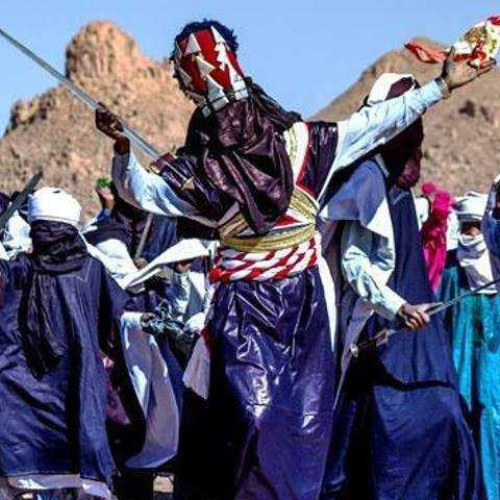Sebiba Party
Explore the very ancient History

Sebiba traces its origins to a page in very ancient history, dating back more than 3000 years.
Its inception lies in the aftermath of the death of Pharaoh when Moses (Moussa) triumphed over his troops. Local tradition recounts a fratricidal war between the Oraren and the Tra’orfitt (tribe of Tassili N’Ajjer) that spanned many years. Only upon learning of Moses’ victory over Pharaoh did they consent to cease their conflicts, sealing a pact of peace that has united them since.
Annually, for ten days, the two Tuareg communities prepare to commemorate this significant event in their history. They uphold the tradition by reenacting the historic site of the last battle. Residents of Tassili N’Ajjer and Tuaregs from neighboring countries gather in Djanet to celebrate Sebiba on Ashoura Day. The ritual continues: a simulated fight, a symbolic dance with a sword in one hand and a headscarf in the other, representing the conflict and the pact of peace.
Adorned in their finest indigo costumes, women sing to the rhythms of tambourines, encouraging their warriors whose footsteps raise clouds of dust and sand. The wise men of El Mihane and Azzelouaz districts now oversee the proceedings. Songs, costumes, and dances have become the focal points of the celebration. As the day concludes, the signing of the peace pact brings an end to Sebiba, thus perpetuating the history of the tribes of Djanet.


Ils témoignent




